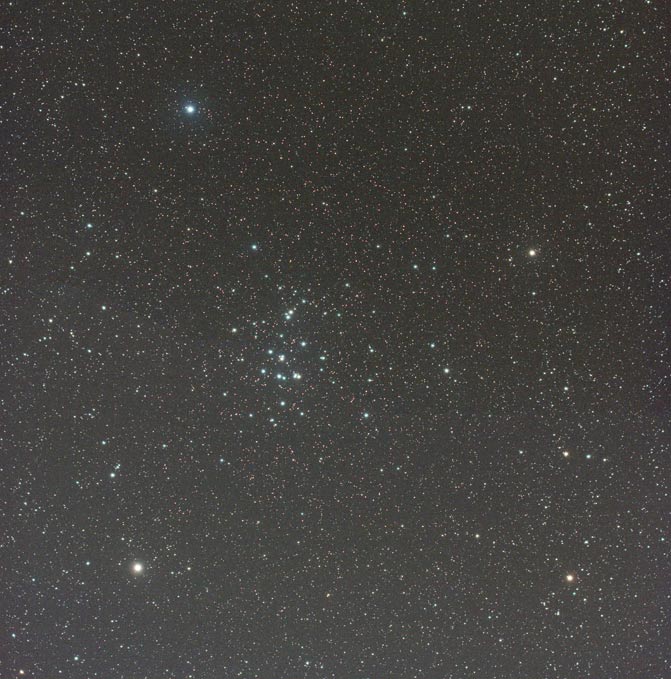| Date & Time: | Mar 14 2015, from 21:16 to 21:42 JST(+0900) |
| Mosaic of 2 flames of composed 4shots with 3 minutes exposed |
| Optical: | BORG 67FL with a conversion lens (f=255mm, F3.8) |
| with IDAS LPS-P2-FF Light-pollution suppression filter |
| Auto-guided with TAKAHASHI JP Equatorial |
| Digital Camera: | Canon EOS 550D (Remodeled) |
| Location: | Ooizumi, Hokuto city, Yamanashi pref. |
| M44 (NGC2632) / Open Cluster, type d, II 3 m |
|---|
| R.A. | 08h 40m 6.0s (2000.0) |
|---|
| Dec. | +19° 59' 00" (2000.0) |
|---|
| Apparent Size | 95.0' |
|---|
| Real Size | 13 light yrs. |
|---|
| # of Stars | 50 |
|---|
| Magnitude | 3.7 |
|---|
| Distance | 520 light yrs. |
|---|
M44 (NGC2632) is a bright open cluster clearly visible to the naked eye on a dark enough sky.
The cluster is well-known as "The Praesepe", meaning of a crib, and also called "The Beehive Cluster" in English.
It's best appreciated with binoculars or small scope, its 1.5 degree size is equivalent to about three full-moons end-to-end,
and distance is estimated about 520 light years.
This grouping is so large it was known in antiquity, when it was thought to be something non-stellar object like a nebula.
Japanese had regarded the cluster as a lump of souls in the ancient time, and the sight of it had terrified them.
|

